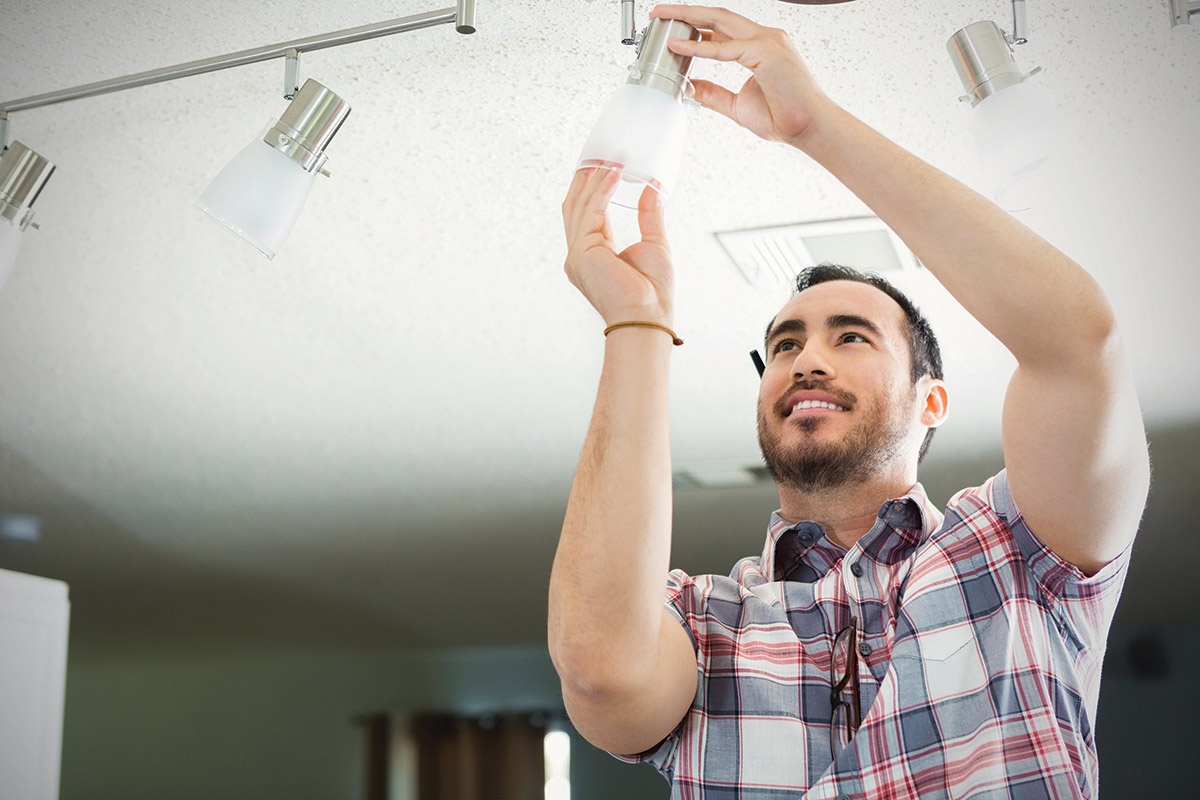There are two ways to measure energy efficiency improvements. There’s the payback period—the amount of time it will take for the improvement to pay for itself. Then there’s comfort. Improvements can often increase the comfort level of a home—not easy to measure but one of the driving forces behind home weatherization efforts. There are several areas of the home that can be improved easily, without breaking your budget.
Lighting
There has been a steady decline in the price of LED bulbs for residential consumers. Nowadays, 60-watt-replacement LEDs can be purchased for $5 or less. LEDs should save 60% or more on power costs compared to incandescent bulbs and last for many years. New LED fixtures are also an affordable option. They come with LED bulbs built in so you never need to change the bulbs.
Heating and Air Conditioning
The Energy Information Administration estimates that heating, ventilating and air conditioning systems account for 22% of a typical home’s annual electric bill. While newer systems can be 20%–45% more efficient than older ones, the upfront cost is often a barrier to adoption.
But there are still ways to save. Simple solutions such as changing air filters at least every three months will increase airflow to rooms, increase the life of the HVAC unit’s motor and improve air quality in the home. Sealing and insulating ductwork can be done in a weekend and results in energy savings of up to 20%.
To lessen the amount of work that heating and cooling systems need to do, it is important to find and seal air leaks. Look for leaks around exterior doors and windows, electric outlets, and entrance points for TV and phone cables. Also check dryer vents and any place with an opening in the wall. To seal leaks, apply caulk, spray foam or weatherstripping to these areas.
Simple acts such as cooking outdoors on a hot summer day or keeping curtains closed to keep out the summer sun will keep the interior of your home cooler and reduce the amount of time AC units need to operate.
Appliances and Electronics
The appliances and gadgets that make life easier are also among the largest users of electricity in our homes. When buying a new appliance, narrow your choices to only those with an Energy Star label. That simple act can result in 10%–15% savings in energy consumption.
Other simple household tips:
- Clean dryer lint traps after every cycle, and don’t overdry—you’ll save energy and extend the life of your clothes.
- Replace worn refrigerator door gaskets to stop cool air from leaking from the refrigerator.
- Clean refrigerator coils and keep fridges away from heat-generating appliances such as an oven.
Home electronics, like computers, TVs and game systems, consume power even when turned off—what are known as “energy vampires.” According to a study conducted by Lawrence Berkeley National Laboratory, the average home loses 8% of its monthly energy consumption to these vampires. A full 75% of the power used to run home electronics is consumed when those appliances are turned off, according to the U.S. Department of Energy. Cutting off power by using a power or smart strip is an easy way to stop this needless waste of energy.
The best energy efficiency improvements are often the easiest. Turning lights off when leaving a room, sealing windows and doors, and cleaning refrigerator coils isn’t as much fun as buying a shiny new appliance. But these simple tasks are proven ways to save energy and increase comfort on a budget.


